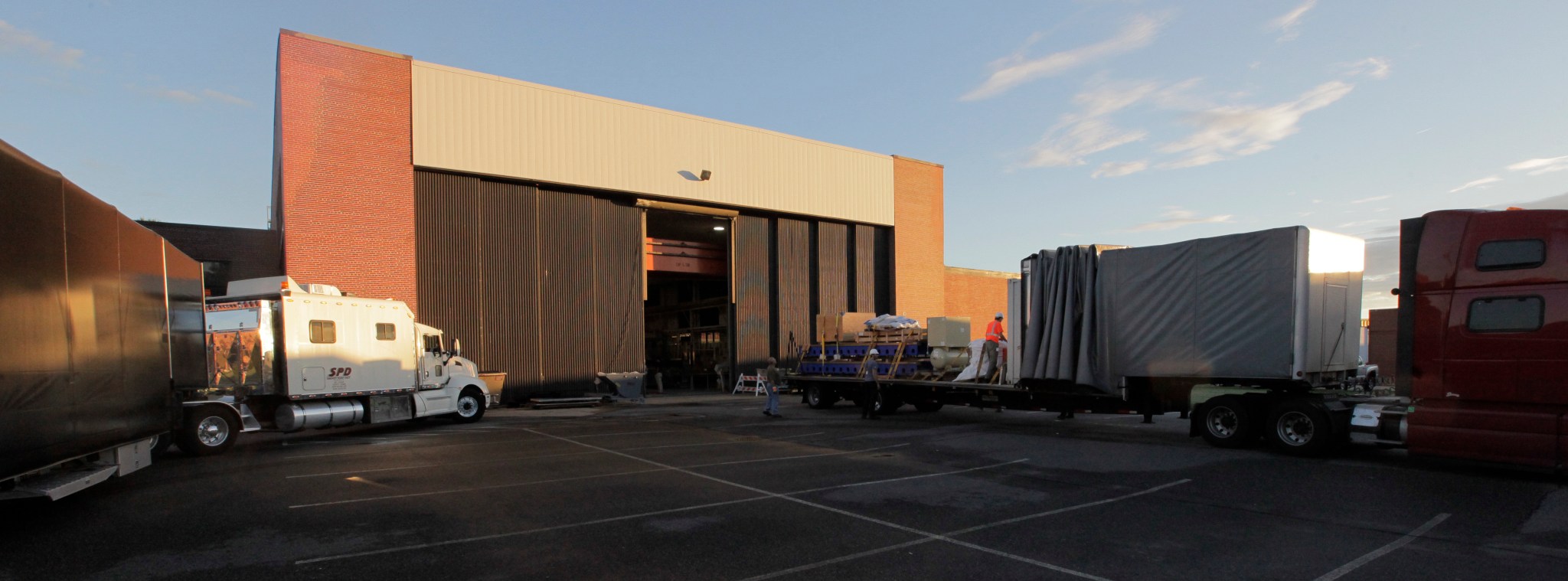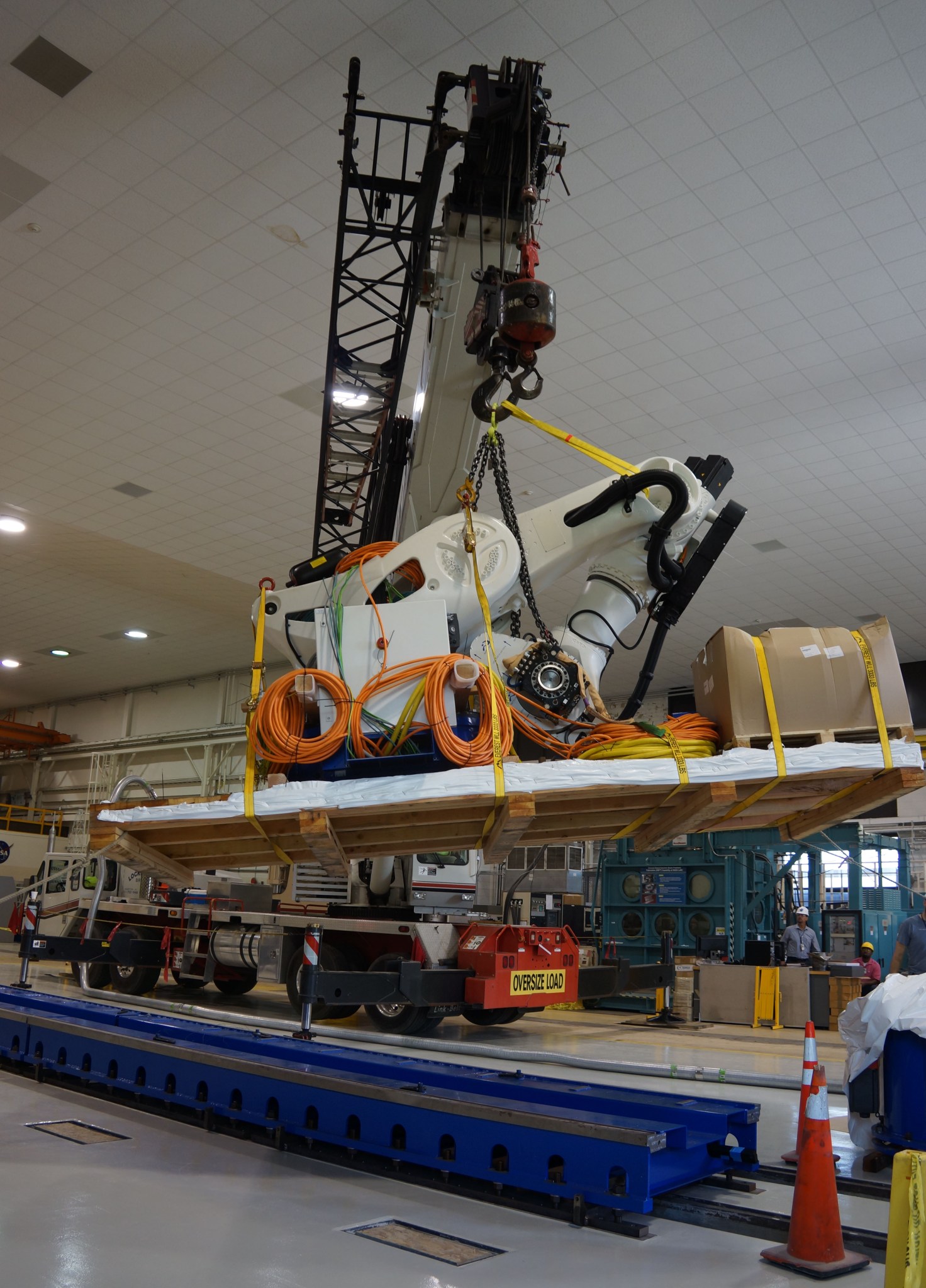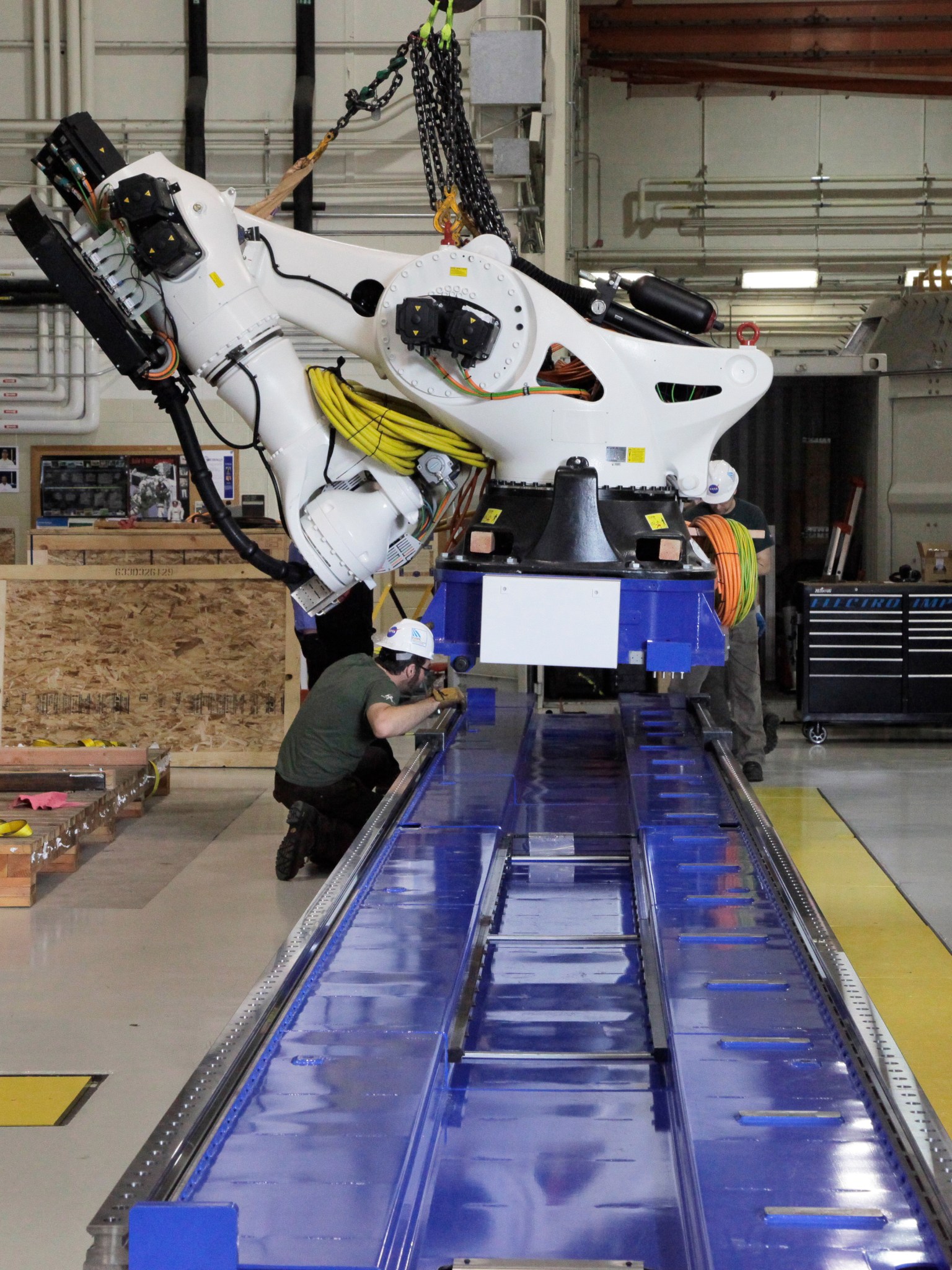Credits: NASA/Gary Banziger
It looks like something out of a “Transformers” movie – a huge robotic arm that moves and spins to pick up massive heads filled with spools of carbon fibers, then moves in preprogrammed patterns to deposit those fibers onto a 40-foot long bed. But instead of transforming from machine to Autobot, it can transform epoxy and fibers into aerospace structures and parts.
NASA’s Langley Research Center is in the process of setting up this advanced composite research capability that engineers are calling ISAAC for Integrated Structural Assembly of Advanced Composites. Just to get ISAAC to the Hampton, Virginia facility was a challenge financially and physically.
“We have worked for two years to obtain this precise robotic technology. But we proposed the idea more than six years ago,” said structural mechanics engineer Chauncey Wu. “It will really make a difference in our ability to understand composite materials and processes for use in aviation and space vehicles.”
Funding was one stumbling block. But Wu and his ISAAC project teammates Brian Stewart and Robert Martin were able to convince NASA Langley to provide about $1.4 million, the Aeronautics Research Mission Directorate to kick in $1.1 million, and the Space Technology Mission Directorate and NASA Langley’s Space Technology and Exploration Directorate contribute a combined $200,000 to the multi-million dollar system cost.
The other challenge was the actual physical move of the ISAAC system. The system is only one of three in the world manufactured by Electroimpact, Inc., headquartered in Mukilteo, Washington. The other two are used for bulk manufacturing of composites, not for research as NASA intends.
Two 53-foot long covered flatbed trucks made the trek all the way across country to bring the robot to NASA Langley in Hampton, Virginia. The trucks arrived at the crack of dawn, before most employees, because they were so large. Waiting for them was ISAAC’s new home – a big empty space in NASA Langley’s Advanced Manufacturing and Flight Test Articles Development Laboratory.
The robot is known for its precision work, but the choreography to place it inside the building had to be just as exact.
“We had to bring in a massive crane from a local company to lift ISAAC,” said Stewart. “There were only inches of clearance between the crane and the ceiling as they moved the robot arm and set it on the floor.”
A few weeks later the same crane returned to set the arm onto the track that it will use to lay down composite fibers. Technicians from Electroimpact still have a number of weeks to make sure all the electronics and pieces work so that ISAAC can begin doing the research that Langley engineers have been waiting to do.
Researchers plan to have ISAAC up and running by early 2015 with the first research customer the Aeronautics Research Mission Directorate’s Advanced Composites Project (ACP).
The project is a public-private partnership that is geared toward reducing the amount of time and money it takes to bring new, advanced composites from test tube to vehicles.
The goal of the ACP is to reduce the time for development, verification, and regulatory acceptance of new composite materials and design methods. NASA will meet this objective through the development and use of high fidelity and rigorous computational methods, new test protocols, and new inspection techniques.
NASA’s space projects also plan to use the ISAAC system in their research. The second project planned for the robot is the Composites for Exploration Upper Stage (C-EUS) Project, a partnership between the Space Technology Mission Directorate and Human Exploration Mission Directorate that is led by the Marshall Space Flight Center.
The C-EUS Project is a 3-year effort to design, build, test and address flight certification of a large composite shell suitable for the second stage of the Space Launch System.
Langley’s role in the C-EUS Project will be to lead the design, manufacture and testing of the shell’s structural joints, as well as leading the overall structural and thermal analyses.



































